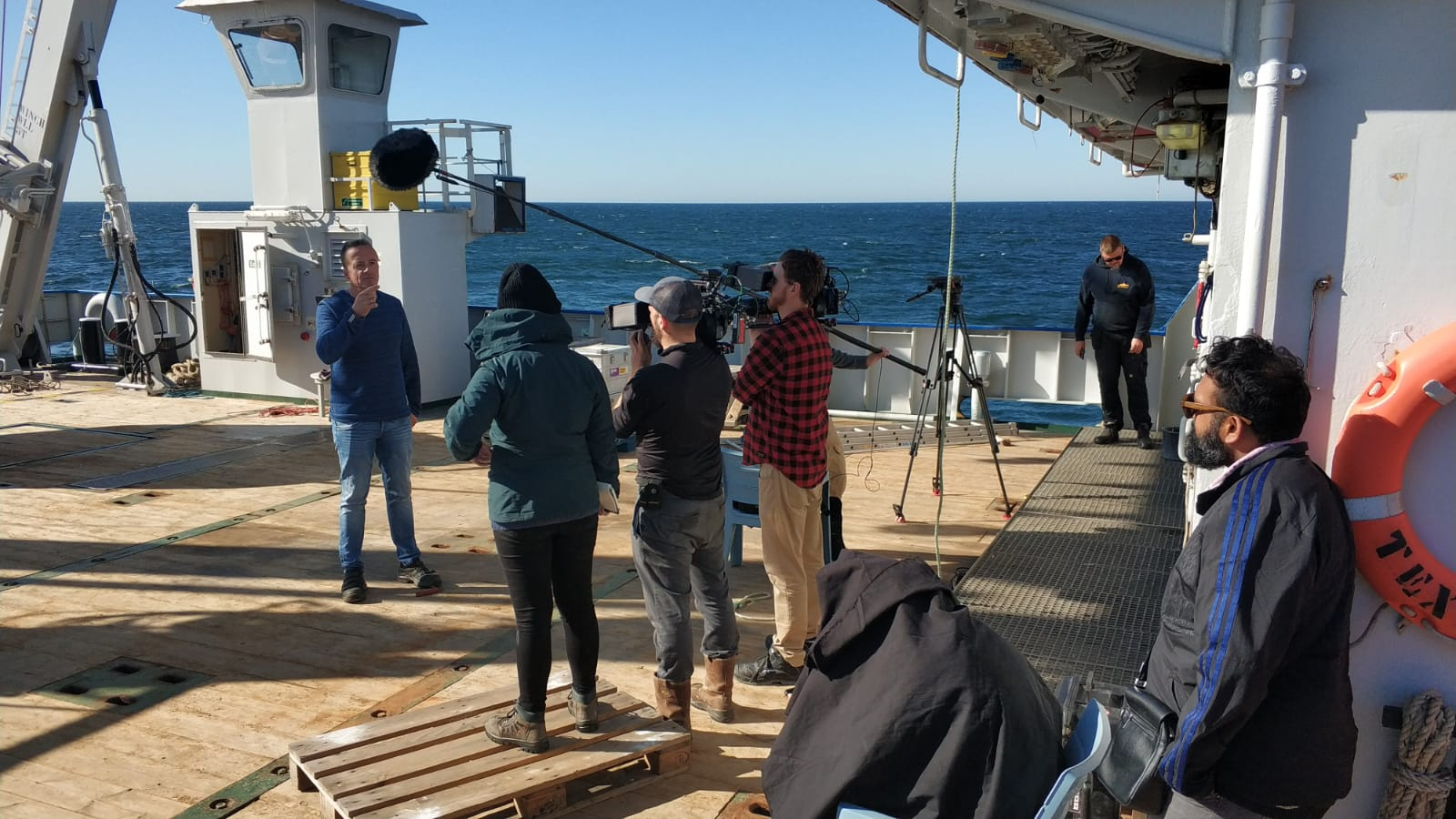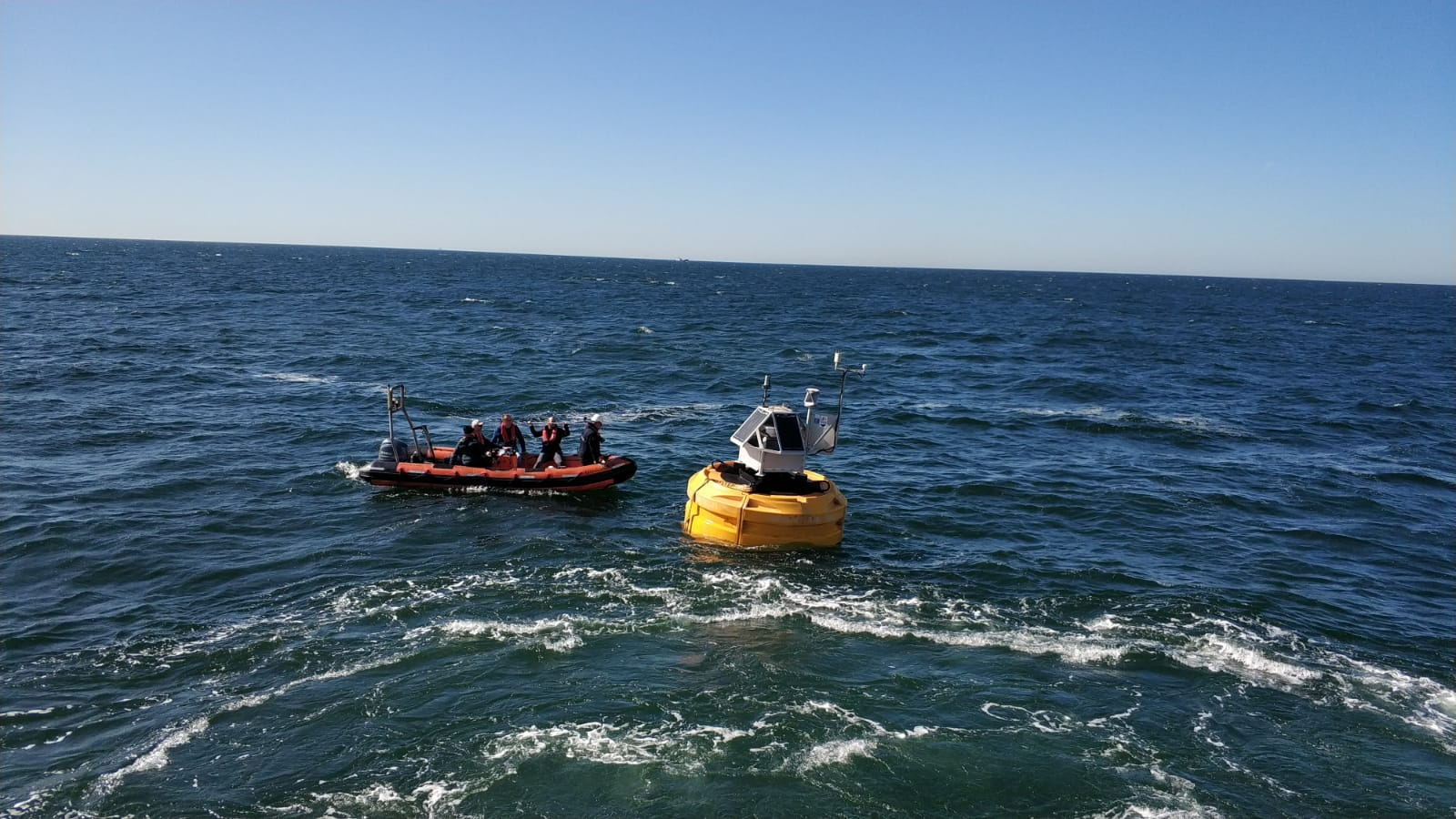NIOZ on Netflix. How can dust help reduce global warming

"Saharan dust transported over large distances through the atmosphere with the offshore trade winds is a potential fertilizer of the ocean. We trace dust originating from the Sahara desert across the whole North-Atlantic Ocean using a trans-Atlantic array of moored equipment with a dust-collecting buoy at the surface and sediment traps in the ocean below it".
Every year in total about 180 Million Tons of so-called mineral dust are blown out from the northwest African deserts (including Sahara and Sahel) westward across the Atlantic Ocean. "Such amounts of dust deposited over such a big area are likely to have an impact. In two affiliated projects at NIOZ and another one at partner institute MARUM-Bremen we are studying Saharan dust by collecting it with instruments that we placed underneath the dust plume. We deployed tethered buoys with autonomous dust collectors, powered by solar panels, which suck air through filters. In addition, we placed moorings with sediment traps to collect material settling through the ocean. Both the buoys and moorings provide time series of dust, which we compare with satellite images and meteorological data", explains Stuut.

From these data and other research, it turns out that there are many direct and indirect links between dust and climate. The main link to the ocean is the fact that marine life may profit from nutrients in dust. When plankton reproduces, it takes up CO2 from the atmosphere. Thus, dust could potentially act as an ocean fertilizer, sequestering a greenhouse gas!
If you want to know more about the impact of dust, watch the third episode of the Netflix series "Connected".
